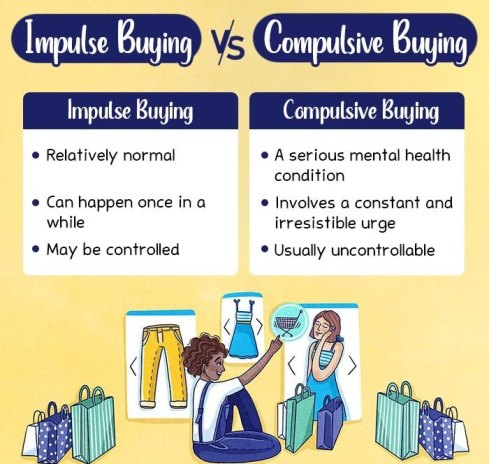Budget-Friendly Shopping: A Guide To Smart Buying

Table of Contents
Planning & Prioritization: The Foundation of Budget-Friendly Shopping
Before diving into the thrill of shopping, a solid plan is crucial for successful budget-friendly shopping. This involves two key steps: creating a realistic budget and prioritizing your needs.
Creating a Realistic Shopping Budget
Tracking your spending is the first step to understanding where your money goes. Once you know your spending habits, you can set realistic limits for each category. Categorizing expenses (groceries, clothing, entertainment, etc.) provides clarity and helps identify areas for potential savings.
- Budgeting Apps: Mint, YNAB (You Need A Budget), Personal Capital offer automated tracking and budgeting features.
- Spreadsheet Budgeting: A simple spreadsheet can effectively track income and expenses, allowing for customized categories and visual representations of your spending.
- Envelope System: This cash-based method involves allocating a specific amount of cash for each category, promoting mindful spending.
Effective budget planning and a well-defined shopping budget are key to achieving your financial goals. Expense tracking apps can simplify this process significantly.
Prioritizing Needs vs. Wants
Distinguishing between needs and wants is fundamental to budget-friendly shopping. Needs are essential purchases—groceries, rent, utilities—while wants are non-essential items. Before purchasing anything non-essential, ask yourself: "Do I really need this?"
- Delaying Gratification: Waiting 24-48 hours before buying non-essential items often helps curb impulse buying.
- The "Need vs. Want" Question: Consistently asking this question before each purchase will train you to be a more mindful shopper.
By focusing on essential purchases and consciously limiting impulse buys, you'll significantly improve your financial health and adopt more responsible spending habits. This mindful approach to needs vs. wants is critical for long-term budget management.
Mastering the Art of Savvy Shopping
Once you have a budget, it's time to master the art of savvy shopping. This involves utilizing coupons and discounts, comparing prices, and shopping strategically.
Utilizing Coupons & Discounts
Coupons and discounts can dramatically reduce your spending. Explore various options:
- Printable Coupons: Many websites and manufacturer websites offer printable coupons.
- Online Coupon Codes: Websites like RetailMeNot and Groupon offer a wide variety of discount codes.
- Loyalty Programs: Sign up for loyalty programs at your favorite stores to earn points or discounts on future purchases. These programs frequently offer exclusive deals and savings.
Stacking coupons (combining manufacturer coupons with store coupons) can maximize your savings. Couponing apps can help you find deals and organize your savings.
Comparison Shopping & Price Tracking
Never buy anything without comparing prices! Use price comparison websites and browser extensions to find the best deals.
- Price Comparison Websites: Google Shopping, PriceGrabber, and Bizrate compare prices from multiple retailers.
- Price Tracking Browser Extensions: Extensions like Honey and CamelCamelCamel track price changes on Amazon and other sites.
Consistent price comparison is a simple yet powerful tool in budget-friendly shopping. Finding the best deals by comparing prices before making a purchase can save you a considerable amount over time.
Shopping Strategically: Sales, Clearance, and Off-Season Purchases
Take advantage of sales, clearance events, and off-season shopping to snag incredible deals.
- Seasonal Sales: Back-to-school sales offer great deals on school supplies; holiday sales offer discounts on gifts and decorations.
- Clearance Events: Check stores' clearance sections for deeply discounted items.
- Off-Season Shopping: Buy seasonal items (e.g., swimwear in winter) at a much lower price.
Strategic shopping, by taking advantage of sales and off-season shopping, can result in significant cost savings without compromising on quality.
Beyond the Price Tag: Sustainable & Ethical Budget-Friendly Shopping
Budget-friendly shopping doesn't mean sacrificing your values. Consider sustainability and ethical sourcing.
Buying Used or Secondhand
Buying pre-owned items is a fantastic way to save money and reduce waste.
- Thrift Stores & Consignment Shops: Explore local thrift stores and consignment shops for gently used clothing, furniture, and more.
- Online Marketplaces: Platforms like eBay, Craigslist, and Facebook Marketplace offer a vast selection of secondhand goods.
- Negotiating Prices: Don't be afraid to negotiate prices, especially at flea markets and secondhand shops.
Secondhand shopping is a fantastic way to practice budget-friendly shopping while promoting sustainability and reducing your environmental footprint.
Supporting Sustainable Brands
While sometimes more expensive upfront, supporting brands with ethical and sustainable practices is a valuable long-term investment.
- Eco-Friendly Brands: Research brands committed to sustainable materials and ethical labor practices.
- Certifications: Look for certifications like Fair Trade, B Corp, and GOTS (Global Organic Textile Standard).
Choosing sustainable brands contributes to a more ethical and environmentally responsible lifestyle, even within a budget.
Conclusion
Budget-friendly shopping is achievable with planning, smart shopping techniques, and mindful purchasing decisions. By creating a realistic shopping budget, prioritizing needs over wants, utilizing coupons and discounts, comparing prices, shopping strategically, and exploring secondhand options, you can significantly reduce your spending and build healthier financial habits. Start practicing these budget-friendly shopping strategies today and transform your spending habits. You'll be amazed at how much you can save with consistent budget-friendly shopping!

Featured Posts
-
 Is Gregg Popovichs Nba Career In Jeopardy Analyzing Recent Events
May 06, 2025
Is Gregg Popovichs Nba Career In Jeopardy Analyzing Recent Events
May 06, 2025 -
 Tnts The Librarians Next Chapter Premiere Date Trailer And Poster Revealed
May 06, 2025
Tnts The Librarians Next Chapter Premiere Date Trailer And Poster Revealed
May 06, 2025 -
 Cole Escola Takes The Cosmo Quiz Unfiltered And Hilarious
May 06, 2025
Cole Escola Takes The Cosmo Quiz Unfiltered And Hilarious
May 06, 2025 -
 Tracee Ellis Rosss Family Tree Exploring Her Famous Relatives
May 06, 2025
Tracee Ellis Rosss Family Tree Exploring Her Famous Relatives
May 06, 2025 -
 A Ap Rocky Behind Bars Examining The Highs And Lows Leading To His Arrest
May 06, 2025
A Ap Rocky Behind Bars Examining The Highs And Lows Leading To His Arrest
May 06, 2025
